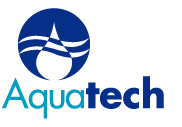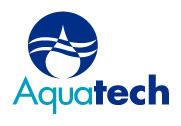 Aquatech recently completed a project for Nirma, a multi-sector fast moving consumer goods brand. Nirma manufactures products ranging from cosmetics, soaps, detergents, salt, soda ash, LAB and injectables. It is the largest selling detergent brand in India and number one in soda ash capacity in the world. The facility is located in Gujarat, a water scarce region in western India.
Aquatech recently completed a project for Nirma, a multi-sector fast moving consumer goods brand. Nirma manufactures products ranging from cosmetics, soaps, detergents, salt, soda ash, LAB and injectables. It is the largest selling detergent brand in India and number one in soda ash capacity in the world. The facility is located in Gujarat, a water scarce region in western India.
This project is an example of how Aquatech’s LoWatt technology can achieve low energy consumption and reduce biofouling.
When Nirma expanded their facility, they had an increased requirement for fresh water. Nirma selected Aquatech to design and supply a new 25 million liters per day seawater reverse osmosis system (SWRO). Aquatech was chosen due to its advanced technology with a focus on pretreatment, energy optimization and overall water recovery.
After studying the feed water quality and issues with the existing operation, Aquatech proposed its patented LoWatt technology for the new SWRO plant.
LoWatt is a novel RO desalination process that focuses on achieving low energy consumption by reducing biofouling on the membrane and integrating it with a cleaning methodology that prevents buildup of any residual bio film on membrane surface; and sustained plant operation is possible at lower energy consumption with high plant availability. This is made possible by the following innovative process approach:
The pre-treatment includes ultrafiltration (UF) membranes, which gives more than 6 log reduction of bacteria and 1-2 log reduction of virus. The permeate of ultrafiltration provides an SDI of less than 3 and very often less than 2. The UF is able to remove the majority of suspended particles including those which are colloidal in nature, and it also removes some biofoulants.
Further treatment happens through a bio-foulant removal step by removing the majority of organics like humic acids, polysaccharides, proteins, amino acids, carbohydrates, bacteria and virus and other potential contaminants which aid biofouling.
The SWRO membranes operate at a lower flux of around 7 GFD. At these levels of flux the energy consumption is optimum to handle a wide range of temperature with minimum variation in power.
To further augment the processes as described above and to stop build-up of bio-fouling, a unique methodology of cleaning is adopted. The method is based on natural osmotic pressure differential between reject and permeate water to dislodge the bio film which can then be flushed off.
Considering the high suspended solids in feed water and the operation knowhow acquired by the customer, Aquatech’s design has maintained the tube settler and media filtration as part of pretreatment before UF.
LoWatt will reduce energy consumption for the facility and deliver water at a low cost to Nirma.
Read more.

